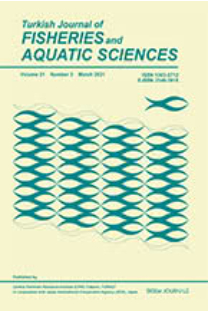Growth, Survival and Gut Microbial Load of Rainbow Trout (Onchorhynchus mykiss) Fry Given Diet Supplemented with Probiotic During the Two Months of First Feeding
A commercial Bacillus spp. probiotic was tested on rainbow trout fry, during the two months of first feeding. Probiotic was introduced in diets at five different levels, (T1: 4.8×108, T2: 1.2×109, T3: 2.01×109, T4: 3.8×109, T5: 6.1×109 CFU g-1) and their effects compared with those of control diet, containing no probiotic. Survival in treatments were significantly (P<0.05) higher than control and a slight increasing mortality rate was observed during the first week of experiment. The counts of bacteria associated with trout intestine in all treatments were significantly (P<0.05) higher than controls and Bacillus spp. was not detected in controls. Total bacteria counts were significantly different among treatments and controls; it may suggest that the colonization rate of digestive tracts of rainbow trout fry with bacteria was affected by dietary bacteria level. Specific growth rate, condition factor, protein efficiency ratio were slightly, but significantly (P<0.05) higher and feed conversion ratio was lower in groups received probiotic via diets than controls. It may show that probiotic stimulates digestive development and enzymatic activity in fish. Growth performance in treatment received 3.8×109CFU g-1 showed the best results. Therefore, it does not appear that higher levels of probiotics improved results and suitable doze of probiotic should be assessed before application in large scale to prevent any undesired effects. The supplementation of trout starter diet with Bacillus spp. is probably effective for improving rearing conditions.
Growth, Survival and Gut Microbial Load of Rainbow Trout (Onchorhynchus mykiss) Fry Given Diet Supplemented with Probiotic During the Two Months of First Feeding
A commercial Bacillus spp. probiotic was tested on rainbow trout fry, during the two months of first feeding. Probiotic was introduced in diets at five different levels, (T1: 4.8×108, T2: 1.2×109, T3: 2.01×109, T4: 3.8×109, T5: 6.1×109 CFU g-1) and their effects compared with those of control diet, containing no probiotic. Survival in treatments were significantly (P<0.05) higher than control and a slight increasing mortality rate was observed during the first week of experiment. The counts of bacteria associated with trout intestine in all treatments were significantly (P<0.05) higher than controls and Bacillus spp. was not detected in controls. Total bacteria counts were significantly different among treatments and controls; it may suggest that the colonization rate of digestive tracts of rainbow trout fry with bacteria was affected by dietary bacteria level. Specific growth rate, condition factor, protein efficiency ratio were slightly, but significantly (P<0.05) higher and feed conversion ratio was lower in groups received probiotic via diets than controls. It may show that probiotic stimulates digestive development and enzymatic activity in fish. Growth performance in treatment received 3.8×109CFU g-1 showed the best results. Therefore, it does not appear that higher levels of probiotics improved results and suitable doze of probiotic should be assessed before application in large scale to prevent any undesired effects. The supplementation of trout starter diet with Bacillus spp. is probably effective for improving rearing conditions.
